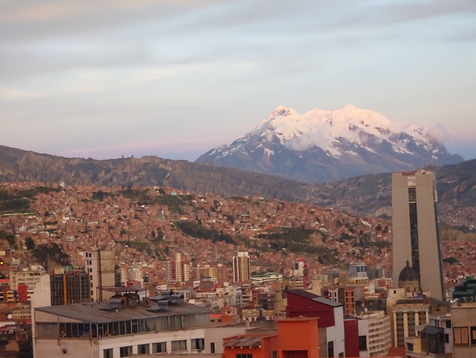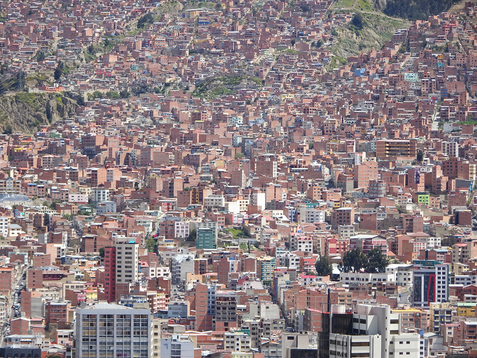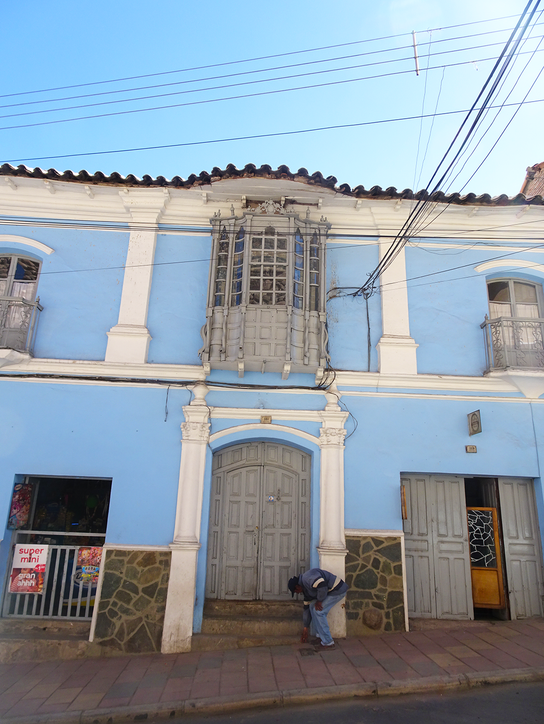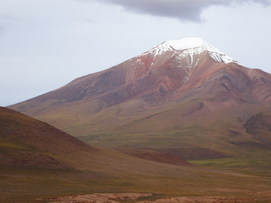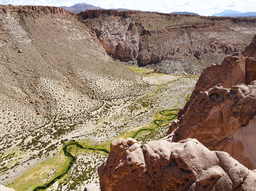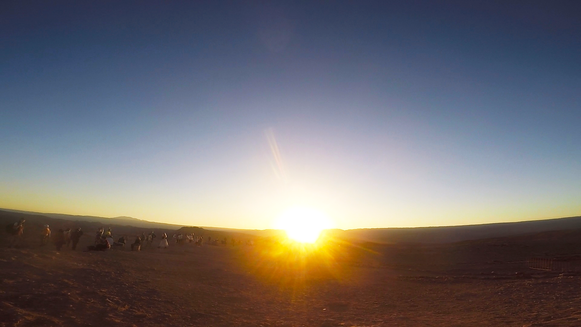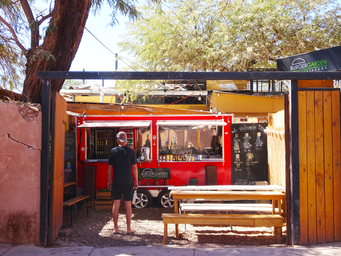Copacabana
After our extended stint in Peru, it finally came time to move on and venture more parts of South America. Our journey across the continent began with a hop-on, hop-off night bus from Puno to Copacabana in Bolivia. Copacabana sits on the edge of the world's largest navigable lake: Lake Titicaca. Copacabana is a small town with a touristy feel. The edge of the town is dedicated to terraced bars and cafes overlooking the lake's edge. Explore a bit further (and by further, we mean up) and you get a much broader perspective. Above the town is a tall hill that offers views of the lake and the town. The cliff can be conquered by one of two paths: an exhaustive scramble up the rocks on one side, or an equally tiring but slightly easier walk up the steps and along the Stations of the Cross on the other. Both ways offer splendid scenery as you walk. Also worth checking out in Copacabana is the Cathedral, glamorously constructed in the Spanish style, it takes up a huge section of town right next to the main square, you can't miss it.

La Paz
From Copacabana, we hopped back onto the hop-on, hop-off bus and made our way to Bolivia's third largest city: La Paz. We spent our first night here camping at the marvellous Calibri Camping, offering splendid views of the Moon Valley. The following day we ventured into La Paz itself, where we met up with our overlanding tour with whom we'd spend the next several weeks - but not before getting in a good look around La Paz itself. Much like New York, on the surface La Paz seems like a traffic-filled, smog-covered, heartless town. Yet, dig deeper and you find colours and flavours far more fascinating. Our explorations took us to the Witch Market - where you can still find love potions! - but today it's more of a tourist market offering local handicrafts. We crossed Plaza Murillo to walk down the stunning Calle Jean, where all the house fronts tell the Colonial history of the city in architecture. After a coffee in La Paz's oldest library, we clambered to the top of Mirador Killi Killi for 360-degree views of La Paz. Finally, we ended the day by riding the cable car at sunset, allowing a final, colourful view of this sprawling South American city.

Potosi
The next stop on our overlanding tour was Potosi - much smaller than La Paz but still with plenty to be seen! This town featured plenty of churches and old convents, including the Cathedral where you can climb the bell tower for a full view of Potosi. Plus, the streets feature an overdose of that now-familiar Spanish Colonial architecture - meaning lots of awesome photos to share!

Uyuni
Our last official stop in Bolivia was in Uyuni - better known as the home of the perspective-bending salt flats. Also in Uyuni is a train graveyard, a practical playground of rusting carriages and engines where you can test your creativity before hitting the flats. At the Salt Flats themselves we got to explore this unique environment, salt covered lands stretching as far as the eye could see, dotted with "islands" covered in cacti. Of course, we had to try our hand at taking some creative photos and having a bit of fun in the process!

Bolivian Countryside
Between each of the above spots we covered plenty of countryside throughout Bolivia. It was very different terrain to what we encountered in Peru but with a beauty of its own. Rough and often arid, it still offered plenty of scenic views and breathtaking scenery.

San Pedro de Atacama
We left Bolivia for Chile and the small town of San Pedro. This town certainly hums with tourist activity, with every second store front belonging to a tour agency. That's not to say it was without its own beauty and appeal - because San Pedro was brimming with both. Though its streets were dusty, San Pedro possessed an unexplainable warmth and plenty of hidden gems, including the best burgers we've had since coming to South America. The drawcard of San Pedro is unquestionably the Moon Valley (unrelated to the one in La Paz). The valley has many caves and trails and unique rock formations to explore.






















